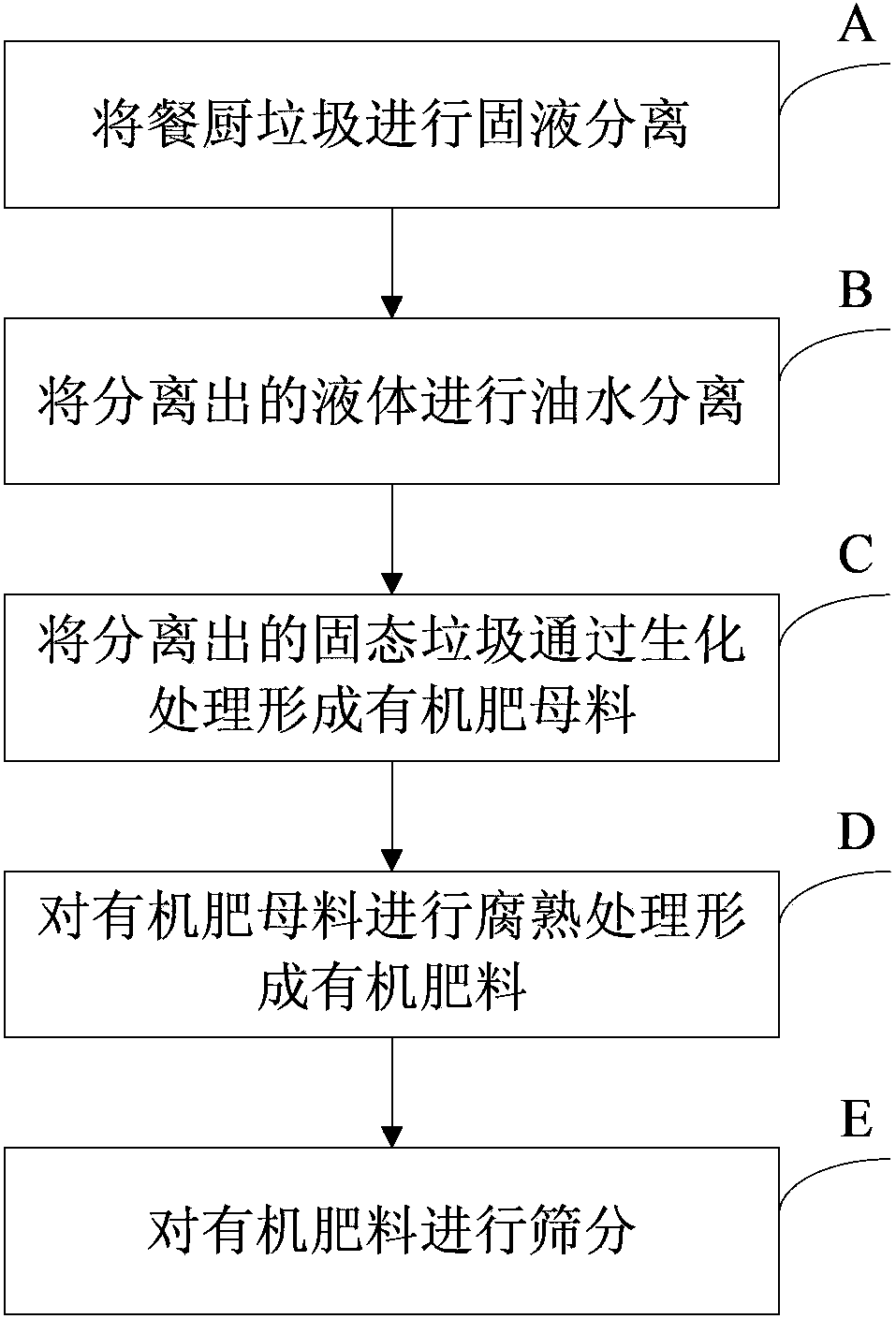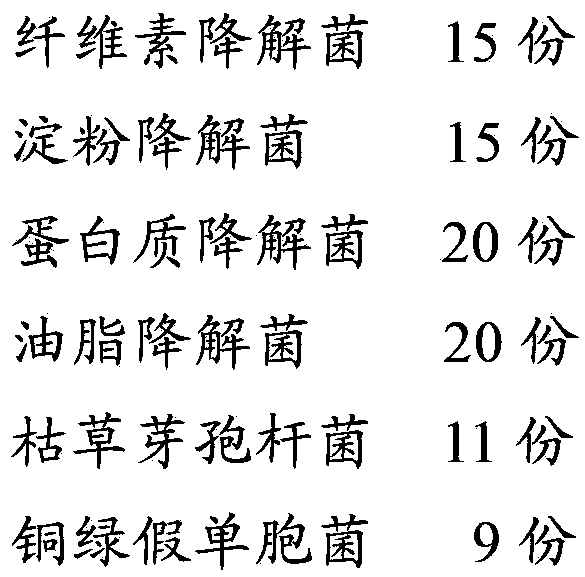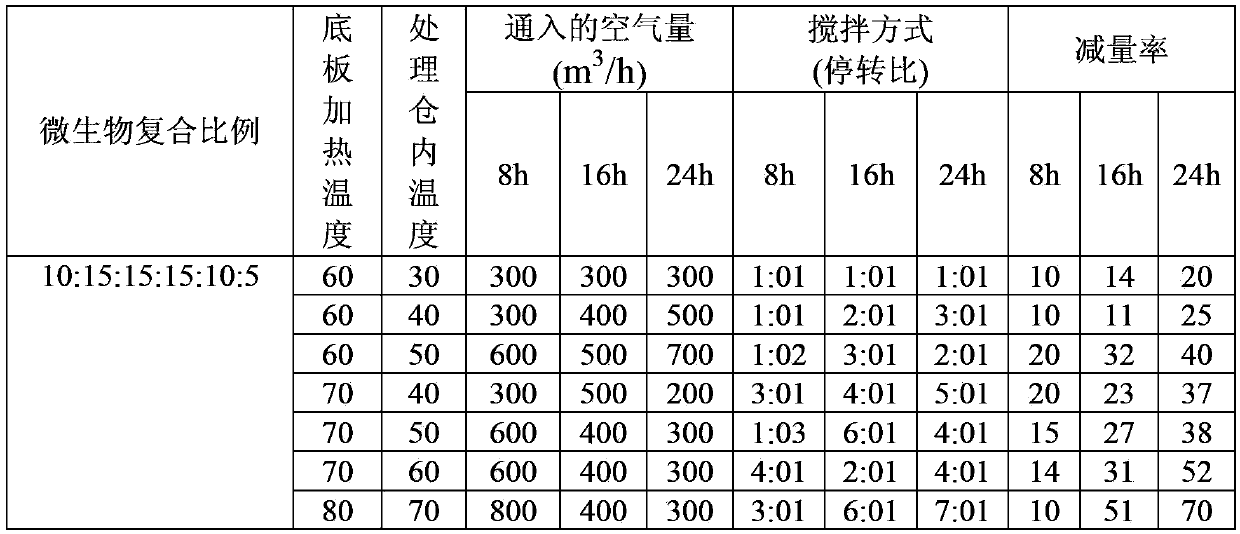Food waste treatment method
A technology of kitchen waste and solid waste, which is applied in the treatment of bio-organic parts, the preparation of organic fertilizers, organic fertilizers, etc., can solve the problems of secondary pollution, increase the load of landfill, increase the difficulty, etc., and reduce the generation of peculiar smell , reduce transportation costs, and save energy
- Summary
- Abstract
- Description
- Claims
- Application Information
AI Technical Summary
Problems solved by technology
Method used
Image
Examples
Embodiment Construction
[0026] Embodiments of the present invention will be described in detail below in conjunction with the accompanying drawings. see figure 1 , the kitchen waste disposal method that the embodiment of the present invention provides, comprises the following steps:
[0027] A. Directly separate the solid-liquid from the food waste on site;
[0028] The components of food waste usually contain solid parts and liquid parts. By directly putting the food waste into the solid-liquid separation device for solid-liquid separation, there is no need to pre-sort and crush the waste. After solid-liquid separation, the food waste The liquid and solid parts of the garbage are recycled separately. For example, the solid-liquid separation can be carried out through a rotating sleeve, the inner wall of the sleeve is provided with mesh holes, and the bottom of the outer cylinder is provided with a drain. Through the rotating centrifugation, the liquid components of the kitchen waste enter the out...
PUM
 Login to View More
Login to View More Abstract
Description
Claims
Application Information
 Login to View More
Login to View More - R&D
- Intellectual Property
- Life Sciences
- Materials
- Tech Scout
- Unparalleled Data Quality
- Higher Quality Content
- 60% Fewer Hallucinations
Browse by: Latest US Patents, China's latest patents, Technical Efficacy Thesaurus, Application Domain, Technology Topic, Popular Technical Reports.
© 2025 PatSnap. All rights reserved.Legal|Privacy policy|Modern Slavery Act Transparency Statement|Sitemap|About US| Contact US: help@patsnap.com



